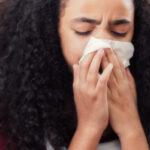Accidents in schools frequently involve trips, slips, and falls. This is primarily brought about by children and teachers’ carelessness, clumsiness, exhaustion, incorrect risk assessment, anxiety, and negligence. Children frequently get hurt when participating in sports, physical education, and school play activities, according to studies. Over 55% of injuries occur during these situations, according to recent data. Unfortunately, there appears to be an increase in the number of preventable accidents, fatalities, bullying, abuse, and sexual exploitation in schools. When children are in school, the school administration and all staff members are responsible for their safety and protection.
Students in schools are protected by innumerable safeguards, such as;
Limitless safeguards for school-aged children.
To ensure the safety of children on the school grounds, it is crucial to pave and organize a school area. Children should be able to learn without fear of physical, emotional, or mental injury to themselves. The cultivation of a law-abiding youngster to rule in life through mentoring with developed intrinsic creative capacity is family protection. He continues by saying that childproofing creates an environment where students may study, play, and explore without worrying about avoidable harm or accidents.
School safety
There can be no compromise on the environment’s safety at school. In order to keep people out of the grounds, a school facility must have comprehensive security protocols and systems, including perimeter fencing, gates, and railings. Additionally, suitable closed-circuit television cameras must be installed in the proper locations and closely supervised by trained staff. Another security safeguard that school managers must implement is a tight procedure for kid collection, according to the expert website High-Speed Training. “For instance, if another family member is coming, use a secret word that only you and the family member know,” the article advises. In-depth security checks must also be implemented for your computer systems. These should prevent unauthorized users from accessing your systems and private data and prevent potentially harmful individuals from getting in touch with you. Teach staff about safety
In order to protect families, protect children, and understand juvenile delinquency, school administrators and employees should receive training. Teachers can acquire the necessary skills and knowledge to ensure children’s safety in schools by adopting and enforcing comprehensive training and certification standards in family protection. The leadership team must designate (perhaps) a senior member of staff to receive Professional Family Protection (social security and safety) training and certification. After completing the program, the person is given the title of Family Protection Lead. The administration of the school should guarantee that this person gets the necessary time, money, training, tools, and support to carry out the job well.
Increased attention during outdoor events.
Extra caution must be taken while participating in extracurricular and outdoor activities. Basic instruction on child supervision during outside activities should be provided to teachers and other staff members. Our youngsters need additional protection, and the school authorities needs to police any events they host. This will make it harder for those with bad intentions to exploit the children’s innocence through loopholes. Teachers and child care providers to behave extremely professionally when interacting with the children entrusted to their care. Character development should be essential to our curriculum and the daily lives of our teachers. Parents shouldn’t be reluctant to teach their children about sex.
An emergency kit should be made available
An emergency first aid kit with the necessary supplies and certified first aiders must be kept on site at all schools. In order to treat the injured right away and, if necessary, transfer them to the hospital, this is crucial. Always have first aid supplies nearby and within reach. It is important to have the right kits on hand for off-site activities like travel and athletic events. A life-saving defibrillator, fire safety supplies, fire blankets, and suitable fire extinguishers are just a few of the first aid supplies that schools should have on hand. They should also have extra first aid kits, personal protective equipment, posters, emergency signs, health and safety supplies, and evacuation chairs for people with mobility issues.
There is no room for bullying.
Children shall not be subjected to behavioral manifestations of “bullying, racism, sexism, verbal and or sexual abuse, homophobic behavior, or any other form of discrimination.”
Instructing students about safety
Children need to be taught emergency procedures, safety precautions, and who to call in case of an emergency. When kids are aware of this, they will signal an adult anytime a situation calls for it. The family protection specialist continues, “Ensuring the curriculum affords a range of opportunities to learn about keeping themselves safe, particularly when using technology.” Staff members take “advocacy, prevention, and protection training in respect of radicalization and extremist behavior and by assessing the risk of pupils being drawn into terrorism,” according to the program.





